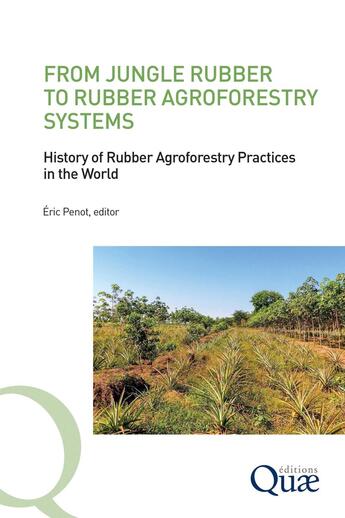-
Date de parution : 10/12/2024
-
Editeur :
Quae
-
EAN : 9782759239344
-
Série :
(-)
-
Support :
Papier
Résumé:
Rubber Agroforestry Systems (RAS) have been developed by local farmers in Southeast Asia initially through the development of jungle rubber. Jungle rubber is a very practical and easy way to develop at very low cost non clonal rubber plantations with forest regrowth, being then the main... Voir plus
Rubber Agroforestry Systems (RAS) have been developed by local farmers in Southeast Asia initially through the development of jungle rubber. Jungle rubber is a very practical and easy way to develop at very low cost non clonal rubber plantations with forest regrowth, being then the main smallholding rubber cropping system until the 1950s. Later on, for political reasons, clonal plantations with better productivity were developed though national planting programs in Malaysia, Thailand and Indonesia. Today, most of the jungle rubber has disappeared or is not anymore tapped, replaced by monoclonal plantation.
However, in some countries, some local farmers continue to adopt or develop agroforestry practices, basically associating rubber with various number and types of plants and trees in both immature and mature period, in order to increase global productivity at plot level and diversify sources of incomes to increase farms' resilience.
In this book, we explain what has been the historical and societal conditions for RAS to develop in countries like Thailand and Indonesia and why there is a future for RAS in the current world with global economic uncertainty. The objective is to provide evidence of RAS interest and constraints in order to develop such systems in other countries. The book integrates various sources from the editor and associated researchers and students, written since 1994 and updated in 2024.
Donner votre avis









